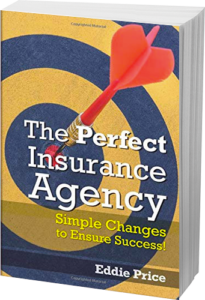“The cost of being wrong is less than the cost of doing nothing.”
—Seth Godin
What is marketing?
Marketing and Sales are often considered the same thing. However, marketing is the process of promoting your product or service and generating leads. Sales take over after the marketing process has brought a prospect to the table.
First, establish a marketing budget
 No return without an investment
No return without an investment
The fundamental concept to understand in business and in life is that every desired outcome requires an investment. If you would like to be physically fit, you have to invest in nutrition and exercise. If you want to be loved, you have to first love. If you want to have more wealth, you have to invest labor or money.
If you would like to get more customers than you currently have, an investment is required. I say all of this because I often see, and have been guilty of this myself, people try to grow their business without having any idea or plan as to how much money they’re going to invest, why they’re investing, and exactly what they’re going to invest this money in.
The question is, should you start by figuring out where you need to invest your money for marketing and then how much that will cost, or should you determine how much you’re going to spend, and then decide where you are going to spend it?
The old saying about the cart and the horse applies here. Which do you decide first: where you need to spend your money, or how much money to spend?
I think about that as I analyze this concept of marketing decisions coming before the budget or the budget coming before the marketing plan. Do you create a budget then decide how to spend that money or do you decide what marketing is going to cost for what you want to do and then set the budget to support that?
I believe that your budget coming first. We’ve already discussed the budget, and we’ve already mentioned that budgets are based on the previous year’s experience, what you plan and hope for an outcome, and the industry standards that you’ve researched.
When you research marketing, you can find some companies are spending as little as zero money on marketing and others are spending as much as 75% of their gross income on marketing. I believe if your past experience tells you that you can spend zero money on marketing and grow as fast as you would like to grow, then that is exactly what you should do. If you do not have a history yet to pull from, or if you would like the future to be different than the past has been, I suggest investing more money than you have in previous years or using a standard rule-of-thumb percentage like 10%.
Monitor and measure results
![]() Track marketing expenses carefully in your accounting system. In QuickBooks, I create a category called marketing and subcategories like Direct Mail, Social Media, Website, etc. You should review monthly, quarterly, and annually to make sure your spending is getting the desired result in each area.
Track marketing expenses carefully in your accounting system. In QuickBooks, I create a category called marketing and subcategories like Direct Mail, Social Media, Website, etc. You should review monthly, quarterly, and annually to make sure your spending is getting the desired result in each area.
Know the lifetime value of your average customer. If you don’t know how much a customer is worth, it will be difficult to know how much you can spend to acquire a customer. We will talk more about this when we talk about sales.
Establish the marketing plan
What’s been the source of your customers so far?
Once we have determined how much money we can spend, then we can create a plan for how we’re going to spend that money. There are essentially two ways we can start thinking about how we’re going to choose what to spend your money on. One way is to look at our history of where we have been getting customers. Most of my career in my agency we have used our agency management system, Jenesis, to accomplish this. Using Jenesis, we were always diligent about tracking the source of every policy that we wrote. Then, we could run reports and know if a customer who purchased a homeowners insurance policy last month found us from our website, was a referral to our agency, or had other types of insurance with us already. I really enjoy looking at these reports from the previous year, grouping them, and sorting them by the most success. I love seeing referrals at the top because the closing ratio for referrals is higher as is the retention of customers who have been referred to you. You see this in reports that you run in your agency management system. I then like to consider each of those areas like referrals, other advertising efforts, and ask myself for each one, 1) How much money are we spending to create that now, and 2) What could we do to increase that? For example, let’s say your number one source is referrals. It’s likely you are spending very little money to create referrals, which is part of the beauty. But, it’s important to read and study ways that other businesses and insurance agencies are increasing referrals. For example, you can have a referral program where each person who sends you a referral is entered into a drawing to win something or is given an gift card to a local business for each referral. This does two things. People like gifts and they will refer more new customers to you. It also supports local business, which in turn may allow you to write insurance for those businesses and possibly for their employees. If you do this, then it is marketing money you are spending to try to increase referrals.
 This post was excerpted from The Perfect Insurance Agency by Eddie Price. For the full chapter on Marketing, you can purchase the book on Amazon.
This post was excerpted from The Perfect Insurance Agency by Eddie Price. For the full chapter on Marketing, you can purchase the book on Amazon.
